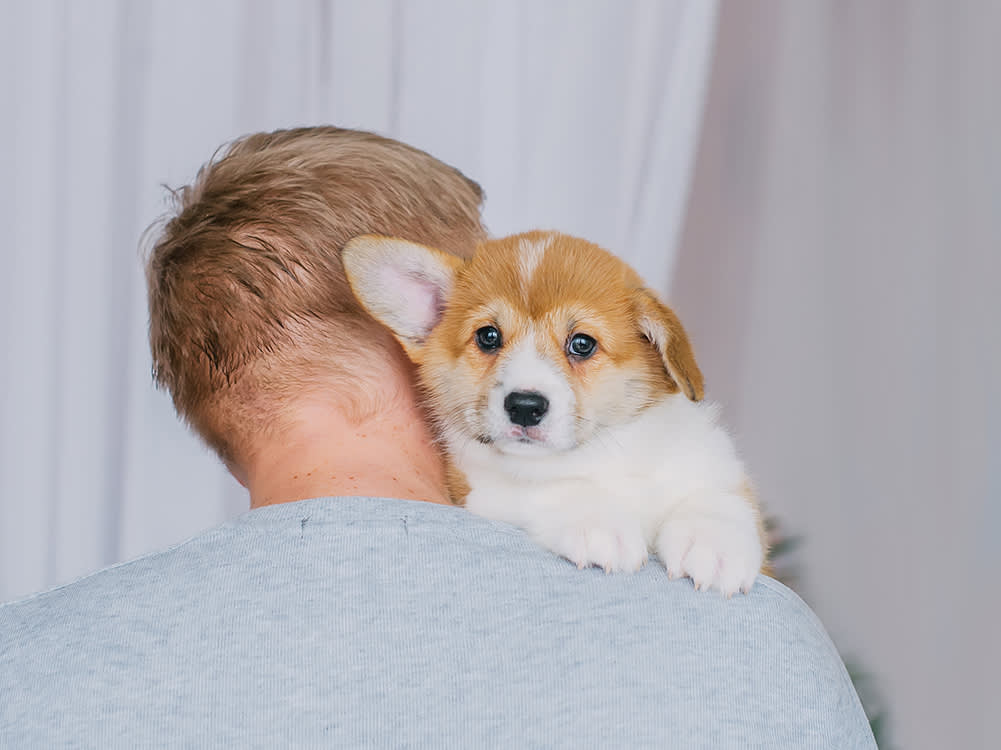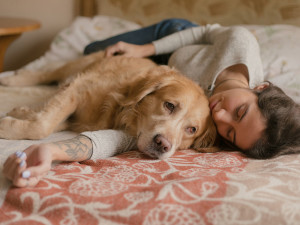Flying with An Emotional Support Animal
Are ESA alpacas and peacocks mocking people with real disorders? A service-dog owner and flight attendant get real.
Anyone who’s flown in the past few years knows we’re living in the age of the Emotional Support Animal. Where once you’d see a Labrador escorting a blind person, until very recently you’d also see three times as many dogs, a few cats, and animals from a stunning array of species: llamas, marmosets, kangaroos, peacocks, turtles, and sugar-glider possums (which we’d call a variety of flying squirrel if ESA squirrels weren’t already a thing).
ESAs are distinct from service animals, which are trained to assist with conditions like visual impairment, seizures, and autism; and to also lie at their owner’s feet without pooping, peeing, barking, or nipping at people or other animals on the flight. But prior to January of this year, a pet needed no such training to qualify as an ESA. Thanks to some vague language in the American Disabilities Act (ADA), owners need only get a therapist to write a letter stating that their animal contributes to their emotional well-being. Or else get a letter from one of many dubious ESA websites, or go on Amazon and buy an Emotional Support vest for 30 bucks.
As more people chose one of these options over paying $175 to fly with a pet in-cabin, the passenger jet slowly became a pressurized Noah’s Ark. “I had an elderly woman with three poodles in diapers,” says Jeff*, a flight attendant with more than 15 years of experience on a major airline. “I’ve seen miniature ponies, potbellied pigs — you know, pretty large animals!” The ADA prohibits crew members like Jeff from asking passengers just what service their pig provides. “And maybe there’s something going on I can’t see,” Jeff concedes. “But I can’t imagine how three incontinent poodles are helping anyone.” They’re certainly not helping other passengers with a preference for an excrement- and bite-free flight. The more outrageous examples of animals’ mid-air misbehavior launched a media trend that makes life harder for people with real but invisible disorders who rely on an animal for help.
“When I was having attacks, I found myself gravitating to my dog to calm me down.”
— Jill*, emotional support dog mom
“I don’t experience problems when I’m flying,” says Jill*, a public-relations professional. “I need my dog before and after the flight.” At age 14, Jill was diagnosed with non-cataleptic narcolepsy, which has struck her with overwhelming sleepiness even behind the wheel. The medication armodafinil keeps her functional during the day but causes panic attacks, tachycardia, and hearing disruptions, which she’s tried to manage with acupuncture, diets, and breathing techniques. A decade ago, she found unexpected help when she and her then-boyfriend adopted a rescue dog. “When I was having attacks, I found myself gravitating to my dog to calm me down. When my heartbeat started getting fast, I’d lie down with her, do deep breathing, and this really calmed me down.”
That specific dog’s behavioral issues ruled it out as a service dog, but after Jill and her boyfriend broke up and her dog died young from kidney failure, Jill’s volunteer work at an animal shelter led her to Sophie*. Jill adopted Sophie, who instinctively presses up against her when she senses an imminent panic attack, rouses Jill if she nods out, and motivates her to do what Jill calls “the small, important things” — walking and getting fresh air, three times daily, whether she wants to or not.
Sophie is trained as a service dog and indispensable, but these days flying isn’t what makes Jill anxious. “What’s become a trigger is all the attention we get,” she says. “When I post photos of us on the plane, I get so many crazy messages from people who are really angry: ‘You don’t look sick; you don’t have a real disability.’” Since there’s no governmental body that issues service-dog IDs, Sophie’s paperwork is a Department of Transportation form showing Sophie’s training, health, and vet’s name, as well as stating that she’s trained to do certain tasks in public without barking, urinating, or defecating. Sophie even has a certificate for passing the American Kennel Club’s Canine Good Citizen test.
In recent years, emotional support dogs have bitten a flight attendant and mauled a passenger, an emotional support squirrel caused an onboard ruckus, and an 80-pound emotional support pig squealed and pooped in the aisle. “I’ve had dogs that growl when you’re handing someone a beverage,” says Jeff. “I think a lot of ESA owners were selfish — they never put any thought into other passengers or animals.” Finally, a coalition of airline, veteran, and service-animal groups lobbied Congress to remove the ESA flight category. They did so on January 11 of this year, and as of March, nearly all U.S. and most international airlines have refused to give free, unconfined rides to animals that aren’t certified as medical or psychiatric service dogs (PSDs).
While the latter certification requires a demonstrable disability like Jill’s, there’s more wiggle room on the ground. The ADA ensures PSDs are allowed in libraries, arenas, hotels, and beaches that otherwise prohibit dogs. The Fair Housing Act ensures that both PSDs and ESAs are allowed in buildings that otherwise forbid pets. While airlines aren’t required to allow ESAs, some may still do so voluntarily, and credentialed PSDs still fly for free. “I’ve had military veterans with PTSD who get nervous in tight spaces and their dogs really do calm and ground them,” says Jeff.
Sophie sits so silently by Jill’s side that deplaning passengers often ask if she was with Jill the whole time. “Maybe it’s cute to bring your dog to Mexico but that’s also likely super-stressful for your dog,” she says. If you have an anxiety disorder, hypoglycemia, or another condition demonstrably helped by your dog, they may well qualify as a PSD. If you’re like the rest of us semi-functional animal lovers, whose pets aren’t exactly emotionally non-supportive, here’s a chance to model good behavior at a time when America really needs it.
* Names have been changed to protect the privacy of the interview subjects.




